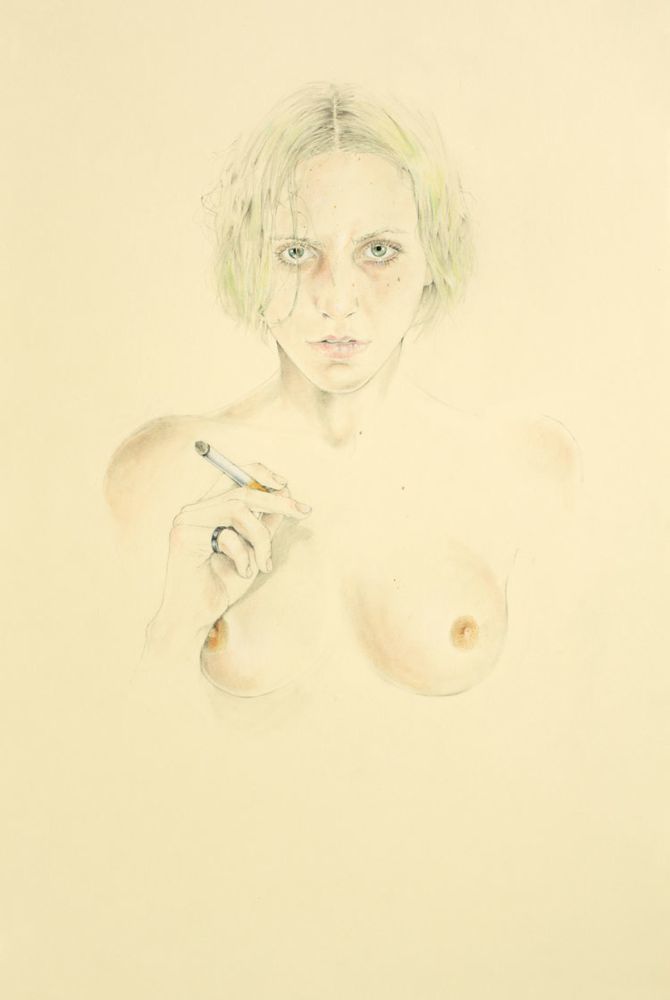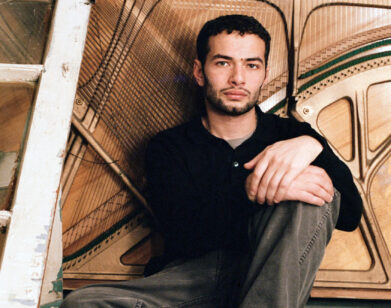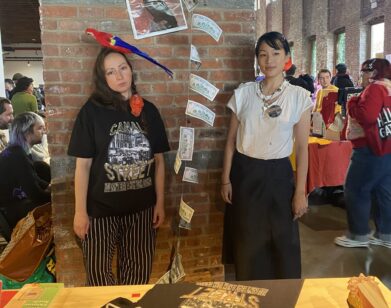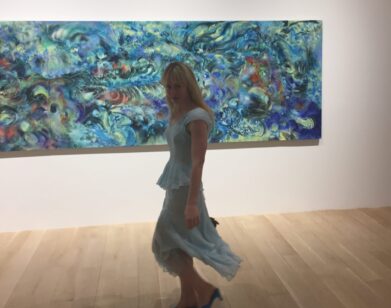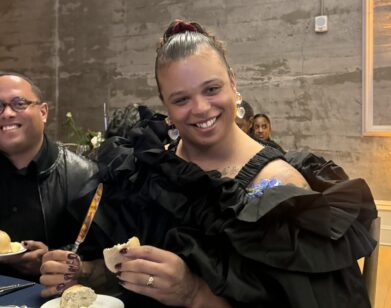Cédric Rivrain’s Eyes Have It
Fashion illustrator and artist Cédric Rivrain’s Paris apartment-cum-studio is a modern-day manifestation of the Cabinet of Curiosities. Part library (his fashion and anatomy books are stacked to the ceiling), part antique laboratory, the 34-year-old’s flat is adorned with obsessively organized, centuries-old medical instruments, stacks of orange Hermès boxes and rows of anatomical models, many of which are wrapped in rubber ligaments. Dangling from his overstuffed bookshelf is a pair of green eyes, which were apparently extracted from an antique doll. “I’m really obsessed with eyes,” says Rivrain, whose own pronounced, twinkling emerald peepers are almost as well known as the ethereal fashion illustrations he’s drawn for the likes of Lanvin, Sonia Rykiel, John Galliano, and Rue du Mail. So it’s fitting that the cover of Selected Drawings, his first book of illustrations, is a surreal image of his own haunting eyeballs.
Spending most of his youth at a boarding school in the center of France (“It was near the convent where Coco Chanel grew up,” he says with a smirk), Rivrain’s first drawing was of his mother, a particularly stylish woman who introduced him to fashion. “She’d always bring my brother and I to Paris to go to Chanel or [Yves] Saint Laurent and she would ask for our advice. Fashion was always all around us.” His mother can also be credited for his artistic use of makeup: he would “borrow” her shadows and powders to supplement his palette and still uses blush and nail polish to bring another dimension to his often uncanny drawings.
Like most of his work, the book’s illustrations largely grow out of Rivrain’s childhood fascinations—cartoons, anatomy, and, of course, eyes. “I used to watch cartoons, and I hated it when they’d end on TV, so I would continue the stories by drawing them,” says Rivrain about his affinity for animated characters. Now, doodles of Popeye, Snoopy, and Mickey Mouse appear on his illustrations of faces covered in strangely elegant Band-Aids. “There’s something aggressive about the process of healing,” he says. “To cover the wound with these smooth [Band-Aids] and nice little cartoons, there’s something sweet about it.”
As his father was a doctor with an impressive collection of unusual medical paraphernalia (the artist’s antique medical instruments were a gift from Dad), Rivrain had access to 18th-century anatomical diagrams. He learned the intricacies of the human form by drawing them with surgical precision. “It was always fascinating for me to understand the body.” Now, when drawing the likes Sasha Pivovarova, Olympia Le-Tan and his favorite muse, jewelry designer Yaz Bukey, whose Plexiglas Andy Warhol necklace hangs from a chair in his living room, Rivrain needs only to glance at them before sketching their bodies in ethereal poses. “Since I learned the body and how it articulates, I know how it’s going to move,” he explains.
Now the focus of his work, Rivrain has dedicated much of the book to eyes—specifically, mechanical eyes. “Drawings are better when you find the perfect emotion in the eyes. And it was interesting to see how mechanical eyes could give emotion,” says Rivrain. From his mechanical gazes, which, it should be noted, ooze as much eerie emotion as his portraits, evolved his crying machines, which he began to draw last year. The artist went through a difficult breakup and, only weeks after the split, had to empty his late parents’ house, which was filled with his childhood memories. Naturally, he was in an emotional state. “The drawings saved me,” he says of his expressive weeping mechanisms. “They were the only thing that could stop me from crying.”
The book combines Rivrain’s fashion illustrations, like images of Pivovarova in Balenciaga and Prada, with captivating nudes and chilling crying contraptions. “I don’t want to differentiate between my art and fashion drawings. I just want to feel free,” he says, adding that, “I think fashion illustration brings some poetry back to the commercial fashion world. It’s something authentic. Fashion [images] are all so digital now and with illustration, you know there’s a human behind it.” Needless to say, Rivrain’s book is not lacking in authenticity.
CEDRIC RIVRAIN’S SELECTED DRAWINGS IS NOW AVAILABLE AT COLETTE, AT OPENING CEREMONY, AND ONLINE. PHOTOS BY AMI SIOUX.

